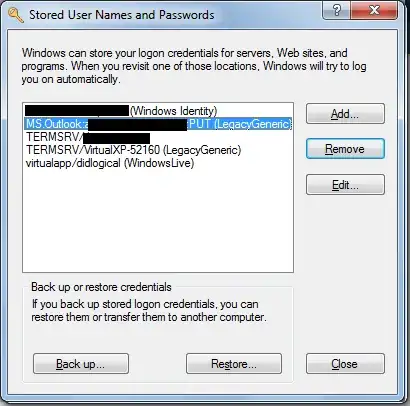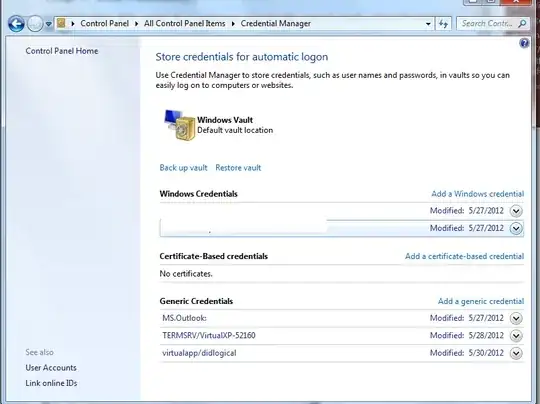Windows seems to be saving my credentials for a variety of applications (terminal servers, etc) and I'd like to purge this data.
How can I backup and purge this data?
Windows seems to be saving my credentials for a variety of applications (terminal servers, etc) and I'd like to purge this data.
How can I backup and purge this data?
The utility to delete cached credentials is hard to find. It stores both certificate data and also user passwords.
Open a command prompt, or enter the following in the run command
rundll32.exe keymgr.dll,KRShowKeyMgr

Windows 7 makes this easier by creating an icon in the control panel called "Credential manager"

There is also a command-line utility:
C:\> cmdkey /?
Creates, displays, and deletes stored user names and passwords.
The syntax of this command is:
CMDKEY [{/add | /generic}:targetname {/smartcard | /user:username {/pass{:password}}} | /delete{:targetname | /ras} | /list{:targetname}]
Examples:
To list available credentials:
cmdkey /list
cmdkey /list:targetname
To create domain credentials:
cmdkey /add:targetname /user:username /pass:password
cmdkey /add:targetname /user:username /pass
cmdkey /add:targetname /user:username
cmdkey /add:targetname /smartcard
To create generic credentials:
The /add switch may be replaced by /generic to create generic credentials
To delete existing credentials:
cmdkey /delete:targetname
To delete RAS credentials:
cmdkey /delete /ras
Link to documentation page: https://docs.microsoft.com/en-us/windows-server/administration/windows-commands/cmdkey
Use cmd:
NET USE
(to see what you're connected to)
NET USE * /DELETE
(to delete all connections)
net use info is not the same info as listed in keymgr or credential mgr.
FYI, I just encountered a case where a credential (possibly corrupt, since it showed up under an entry named with only two, odd Unicode characters) appeared only in the rundll32.exe keymgr.dll,KRShowKeyMgr interface, and not in the Credential Manager interface found in the Windows 7 control panel. So it may be worth checking both interfaces for cached credentials.